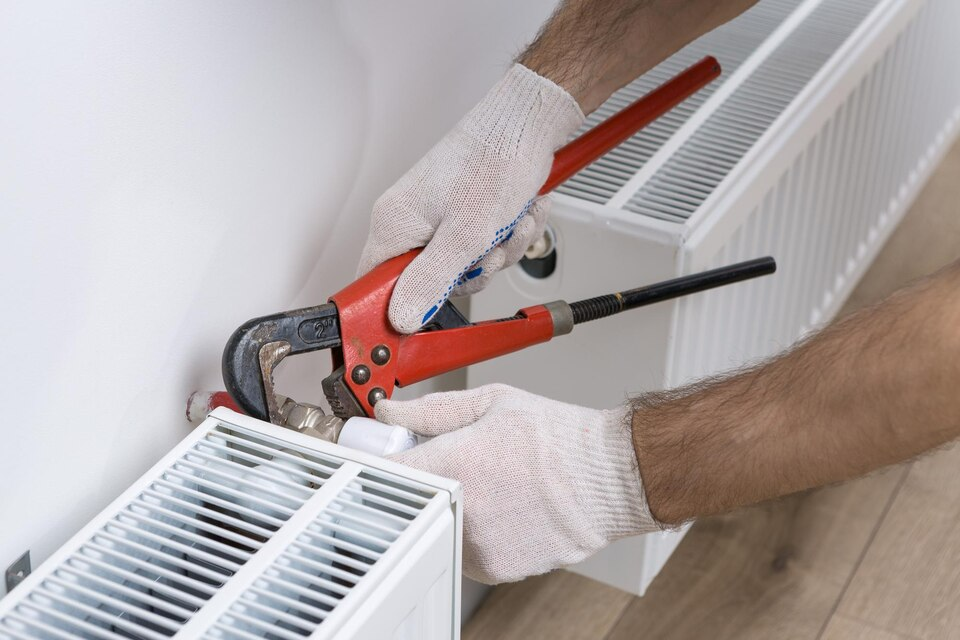The leaves crunch, the wind bites, and your neighbor is already bragging about firing up their fireplace. Winter’s coming—and your heating system knows it. The question is: are you ready?
If you’re like most homeowners, your furnace hasn’t crossed your mind since March. Out of sight, out of mind… until the first freezing night arrives and your system refuses to cooperate. Then it becomes very, very visible—along with your breath in the living room.
Before you’re wrapped in blankets Googling “heating services near me” in a panic, take a beat. A pre-winter checkup doesn’t just ensure warmth—it prevents breakdowns, lowers energy bills, and helps your heater live a longer, less dramatic life.
Here’s your no-nonsense checklist to get your heating system winter-ready before the temperature drops.
1. Test It Before You Need It
Don’t wait for a snowstorm to discover your system’s got stage fright.
Turn on your heater on a chilly fall day. Let it run for at least 15 minutes. Listen for unusual sounds (squeals, bangs, endless cycling). Check if warm air is flowing evenly through vents. If anything feels off—even slightly—that’s your cue to schedule service.
Think of it like waking up a bear from hibernation. You want to do it gently. With supervision.
2. Change (or Clean) the Air Filter
Your air filter is the unsung hero of your HVAC system. It traps dust, pollen, pet hair, and whatever mysterious debris your vents collect during the off-season.
A clogged filter makes your system work harder. That means higher bills, worse airflow, and an increased chance of breakdowns when you need heat most.
Pro tip: Swap it out every 1–3 months, depending on pets, allergies, or if your house doubles as a construction zone.
3. Inspect Thermostat Accuracy
If your thermostat says it’s 70 but your toes feel like icicles, something’s off.
Check:
- Is it reading the room temperature correctly?
- Does the heat actually kick on when you adjust the setting?
- Are the batteries fresh (if applicable)?
Smart thermostats are great—when they’re actually smart. If you’ve got an old-school dial or a system that’s hard to program, upgrading might be worth it. Bonus: a new thermostat can improve energy efficiency and help balance temperature across rooms.
4. Clear the Clutter Around Your Unit
Your furnace or heat pump isn’t picky—but it does need breathing room.
Clear at least 2–3 feet of space around your indoor heating unit. Remove boxes, storage bins, laundry piles, or anything else that’s accumulated during the warmer months. Obstructions reduce airflow and increase fire risk. Plus, if a technician needs access, you don’t want them stepping over your Halloween decorations from 2016.
5. Check Carbon Monoxide Detectors
This isn’t just about comfort—it’s about safety.
If your heating system burns fuel (gas, oil, propane), it can produce carbon monoxide (CO). It’s odorless. It’s invisible. It’s dangerous. That’s why detectors are critical.
Do this now:
- Test your CO detector by pressing the “test” button.
- Replace batteries if needed.
- If you don’t have one, buy one. Full stop.
Better yet? Schedule a professional inspection to make sure your heat exchanger is intact and venting properly.
6. Inspect Vents and Registers
Blocked vents make your system work harder. That means higher energy costs and uneven heating.
Walk around your house and:
- Vacuum dust and pet hair from registers
- Make sure nothing is blocking them (curtains, furniture, rugs)
- Ensure they’re open (yes, closed vents can hurt more than help)
Good airflow equals better performance. Don’t choke your system before winter even starts.
7. Look (and Listen) for Warning Signs
Now’s the time to channel your inner detective. Keep an eye—and ear—out for early indicators of trouble:
- Strange noises: clanking, humming, or screeching? Red flag.
- Unusual smells: a musty, burning, or gas-like odor is a no-go.
- Frequent cycling: if the system keeps starting and stopping, something’s off.
- Cold spots: rooms that never warm up could point to duct issues or poor circulation.
Don’t ignore these signs. They’re the early chapters of what could become a winter horror story.
8. Schedule Professional Maintenance
Yes, you can Google “heating services near me” and scroll endlessly. Or you can go with a local name homeowners trust.
Why call a pro?
- They’ll inspect burners, pilot lights, heat exchangers, and wiring
- They can identify issues before they escalate
- Many warranties require annual maintenance to remain valid
- You get peace of mind before temperatures hit single digits
Preventive maintenance is cheaper than emergency repairs—and way less stressful than a broken furnace at midnight.
9. Consider System Age and Efficiency
How old is your system? Be honest.
- 10–15 years old? You might be due for an upgrade.
- Over 20? You’re on borrowed time.
Older systems aren’t just inefficient—they’re prone to breakdowns. And if your heater still uses a pilot light or has metal ductwork older than your mortgage, upgrading could cut your energy bills significantly.
Modern systems offer:
- Smart thermostat compatibility
- Better energy ratings
- Zoned heating
- Quieter operation
Yes, it’s an investment. But so is surviving February without frostbite.
Final Take: Don’t Wait Until It’s Broken
Winter doesn’t care about your schedule. And your heating system won’t give you a courtesy warning when it’s about to quit.
But you? You’ve got a checklist. You’ve got options. And most importantly—you’ve got time right now to act.
Search “heating services near me” before your system makes that decision for you. Whether it’s a quick tune-up, a full inspection, or a full-on replacement, experts like Anton’s Heating & Cooling are ready to help.
Warm homes don’t happen by accident. They happen because someone prepared.
